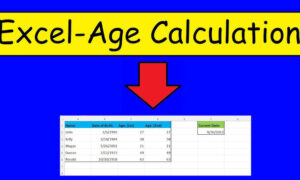Introduction
Efficiently managing operating expenses is crucial for businesses of all sizes. Accurately calculating and tracking these expenses can provide valuable insights into the financial health of an organization. While manual expense calculation can be time-consuming and prone to errors, automation offers a solution that saves time, reduces human error, and enhances overall efficiency. In this article, we will explore how businesses can harness automation to streamline the process of calculating operating expenses.
Automatic calculation operating expenses
Implement an Integrated Financial Management System: To automate the calculation of operating expenses, it is essential to invest in a robust financial management system. This system should include features specifically designed to handle expense tracking and reporting. An integrated system will enable you to capture expenses from various sources, such as invoices, receipts, and credit card statements, and consolidate them into a centralized database for automated processing.
Categorize Expenses: Categorizing expenses is a fundamental step in accurately calculating operating expenses. By assigning each expense to a specific category, you can gain better visibility into different expense types, such as utilities, salaries, marketing, and office supplies. Automated systems often include pre-defined expense categories, but you can customize them to align with your business needs. This categorization process lays the foundation for efficient expense calculation.
Utilize Optical Character Recognition (OCR) Technology: OCR technology converts scanned or photographed documents, such as receipts and invoices, into machine-readable text. By integrating OCR capabilities into your financial management system, you can automate the extraction of relevant expense details, such as vendor names, amounts, and dates, from these documents. This eliminates need for reduces errors, manual data entry, and expedites expense calculation.
Integrate Bank Feeds: Linking your financial management system with your business bank accounts allows for seamless integration of transaction data. With this integration, your system can automatically import and reconcile bank transactions, saving time on manual data entry and reducing the risk of missing expenses. This streamlined process ensures that your operating expense calculations are up-to-date and accurate.
Establish Expense Approval Workflows: Automating expense calculation involves setting up workflows that facilitate expense approvals. With an automated system, you can define approval rules based on expense types, amounts, and organizational hierarchies. This ensures that all expenses go through the appropriate approval channels before being included in the operating expense calculations. By establishing efficient workflows, you can maintain control over expenses while minimizing delays and bottlenecks.
Generate Real-time Reports: Automated systems enable real-time reporting capabilities, providing instant access to accurate and up-to-date operating expense information. These systems can generate customizable reports that summarize expenses by category, department, project, or any other relevant dimension. Real-time reports not only empower decision-makers with timely insights but also aid in budgeting, forecasting, and identifying cost-saving opportunities.
Leverage Data Analytics: Beyond automated expense calculation, leveraging data analytics can unlock additional value. By analyzing historical expense data, you can identify trends, patterns, and anomalies. This information can help you make informed decisions, optimize spending, negotiate better contracts with vendors, and identify areas where cost reductions are possible. Data analytics empowers you to proactively manage your operating expenses and drive financial efficiency.
Last words
Automating the calculation of operating expenses offers numerous benefits to businesses, including time savings, reduced errors, and improved financial insights. By implementing an integrated financial management system, utilizing OCR technology, integrating bank feeds, establishing approval workflows, and leveraging real-time reports and data analytics, businesses can streamline their expense calculation processes and gain a competitive advantage. Embracing automation in this area allows organizations to focus on strategic initiatives and make data-driven decisions that drive growth and profitability.



































